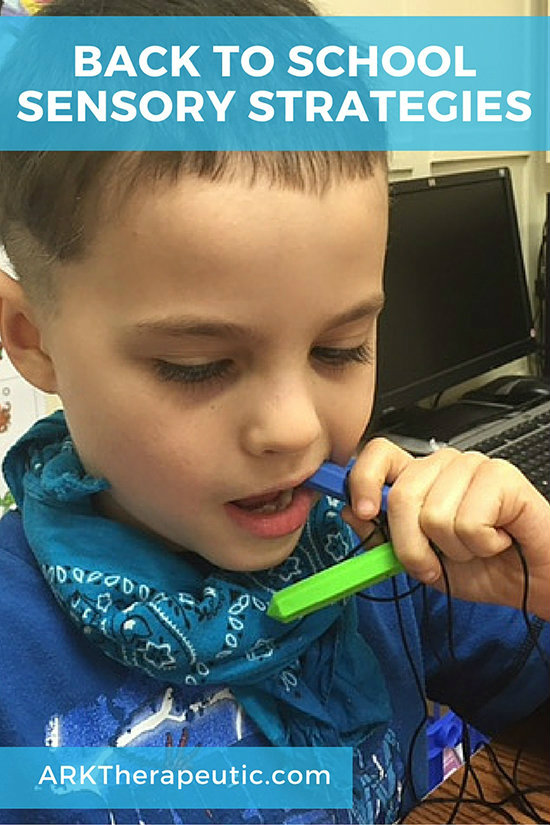Back to School Sensory Strategies
26th Aug 2015
Back to school can be a very stressful time for any child as they adapt to new surroundings, new friends, new teachers, new classes, etc. You may see their sensory needs increase during this time. For instance, the child may be very fidgety in class, may act out more, may start chewing on things or their chewing may increase, etc. Luckily, though, giving children the appropriate tools to regulate their systems can significantly help them through this time.
.

.
BEFORE SCHOOL STARTS
• Prepare the child ahead of time - take a tour of the school so they can preemptively get more comfortable with the environment before it starts bustling with activity. Note where the bathrooms are, the cafeteria, etc. Note any movable walls in particular - that can really throw a child off if suddenly the cafeteria is half the size because the room separator is out!
• If you have the child’s schedule ahead of time, do a practice walk through the school with him/her. Visit the classrooms and other areas in the order as the child will during school.
• Go to meet the teacher before hand.
• Discuss unexpected noises that they may hear (fire alarm, school bell ringing, people talking over loud speaker, etc.)
.
DURING TRANSITIONS AT SCHOOL
• Allow the child to wear earbuds during transitions if necessary.
• Have the child wear his/her backpack during all transitions as added weight to assist with calming.
• When forming lines, have the child be either the first or last person in line - this will decrease the chances of being bumped or touched by other children.
• If transitions between classes are too much, ask if the child can transition a bit early or a little later than the other children to reduce anxiety/noise/crowds.
.
IN THE CLASSROOM
• See if the teacher will allow the child to pass out papers or collect items from the other children when the occasion arises. This will give him/her the opportunity to get up and move for a bit, which may then help increase attention when they sit back down. .
• Give the child sensory items for the classroom like a stress ball, hand putty, fidget toy, etc. to manipulate during the day to decrease anxiety and self calm. .
• Tie a theraband (or any stretchy band) to the legs of the child’s desk so that he/she can push/pull against it with his/her feet.
• A weighted pencil (or a weighted + vibrating pencil) may help increase focus when writing. .
• Ask to have the child sit on a ball to reduce movement and fidgeting.
.
FOR ANYTIME
• Have the child push his or her hands together in a "prayer" position and count to 10-20 as a self-calming strategy.
• Have the child place his/her hands underneath their chair and attempt to pull the chair off the ground while they remain seated. Count to 10 or 20. .
• Deep breathing may help, too. Take 5 deep, slow breaths.
• Give the child a safe outlet to chew on. Chewing can be very calming, focusing, and regulating (check out the concentration in the picture above!), so it’s perfect for both in the classroom and out. Gum may work if the teachers allow it, and/or chewable jewelry as discreet way to chew. Chewable pencil toppers are also a convenient sensory solution for the classroom.
.
Some of the above strategies might need to be listed on the child's IEP (individualized education program) to be done, but remember - parents can ask for an IEP meeting any time of the year if adjustments need to be made, changes occur, etc. It doesn’t have to only be at the beginning or end of the school year.
And as always, be sure to discuss the child’s needs with his/her occupational therapist.
.

